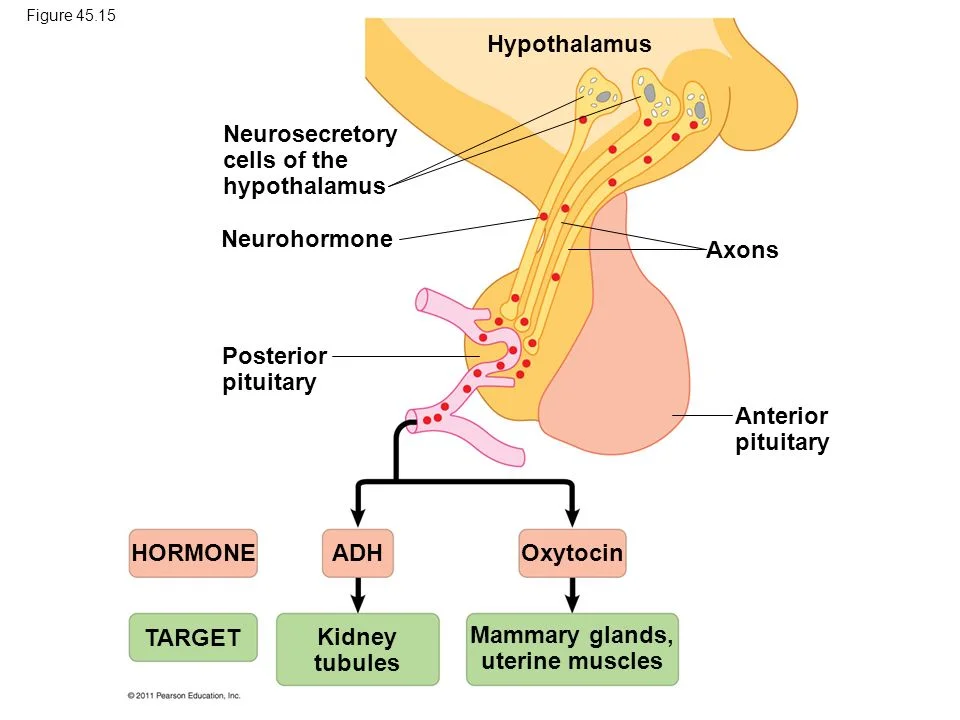Answer: Neurotransmitters only have action at a small volume where release occurs, but neurohormones can have a wide variety of action across many targets, possibly very away from the site of synthesis.
Neurohormones, however, are released systemically. Generally they are produced by cells in the hypothalamus, where they enter into the bloodstream. Once here, the neurohormones can diffuse widely across several organs where they can have a variety of effects. Some classic neurohormones include testosterone and estradiol.
Neurotransmitters are endogenous chemical substances that can affect the excitability of neurons. The neurotransmitter molecules are synthesized by enzymes inside the neurons. The classic model of neurotransmission depends on the substance being packaged into synaptic vesicles at the axon terminal, and these vesicles then get released after excitation of the cell results in calcium entry. These molecules diffuse across the synapse and activate receptors which are expressed postsynaptically on the cell (or, in the case of autoreceptors, activate receptors expressed presynaptically to function in a negative feedback loop.) Some classic neurotransmitters include glutamate and GABA.
Some chemicals can function as both a neurotransmitter and as a neurohormone. For example, dopamine can be stored in vesicles and released synaptically in the nucleus accumbens by cells with their soma in the ventral tegmental area. This signaling is observed in the perception of salient stimuli, such as when an unexpected reward is received. But dopamine can are also be produced by the hypothalamus and secreted into the bloodstream. In the blood, dopamine can act as a vasodilator, can increase urine output by the kidneys, can slow intestinal motility, and can decrease insulin production by the pancreas. Norepinephrine and epinephrine are examples of chemicals that can both function at synapses as neurotransmitters or in the body as neurohormones.

